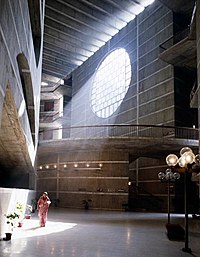
Photo from wikipedia
Monitoring the physiological changes of organelles is essential for understanding the local biological information of cells and for improving the diagnosis and therapy of diseases. Currently, fluorescent probes are considered… Click to show full abstract
Monitoring the physiological changes of organelles is essential for understanding the local biological information of cells and for improving the diagnosis and therapy of diseases. Currently, fluorescent probes are considered as the most powerful tools for imaging and have been widely applied in biomedical fields. However, the expected targeting effects of these probes are often inconsistent with the real experiments. The design of fluorescent probes mainly depends on the empirical knowledge of researchers, which was inhibited by limited chemical space and low efficiency. Herein, we proposed a novel multilevel framework for the prediction of organelle-targeted fluorescent probes by employing advanced artificial intelligence algorithms. In this way, not only the targeting mechanism could be interpreted beyond intuitions but also a quick evaluation method could be established for the rational design. Furthermore, the targeting and imaging powers of the optimized and synthesized probes based on this methodology were verified by quantitative calculation and experiments.
Journal Title: Research
Year Published: 2023
Link to full text (if available)
Share on Social Media: Sign Up to like & get
recommendations!